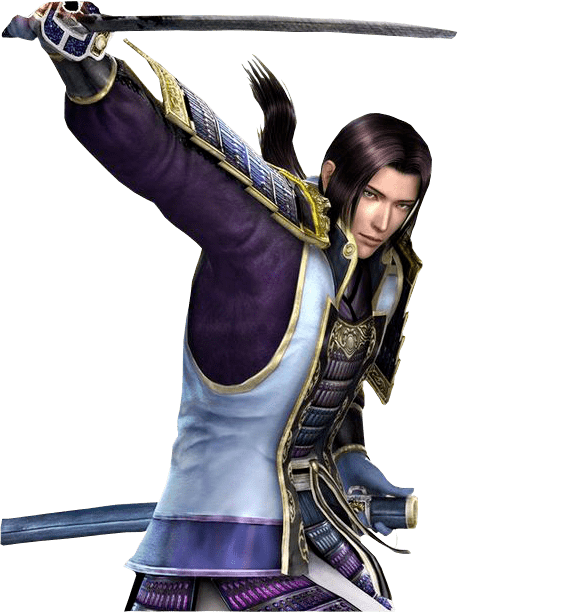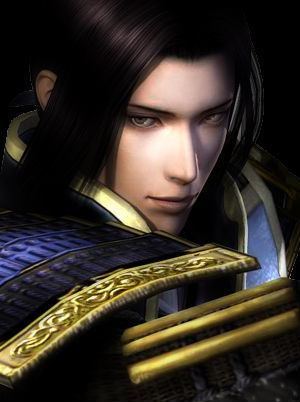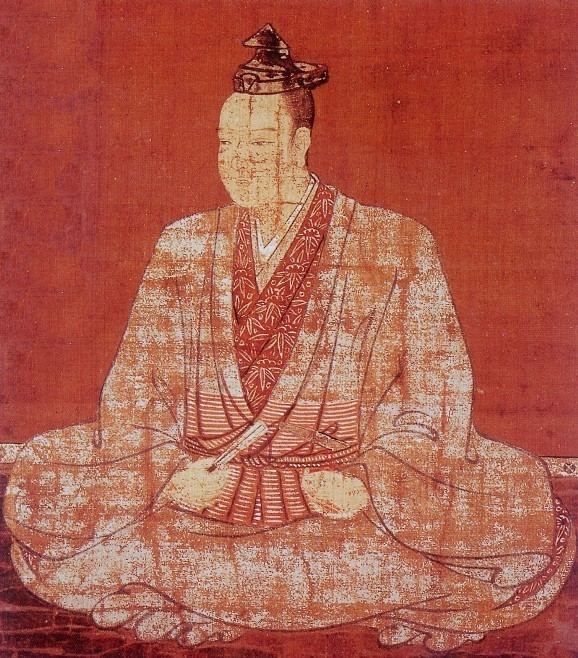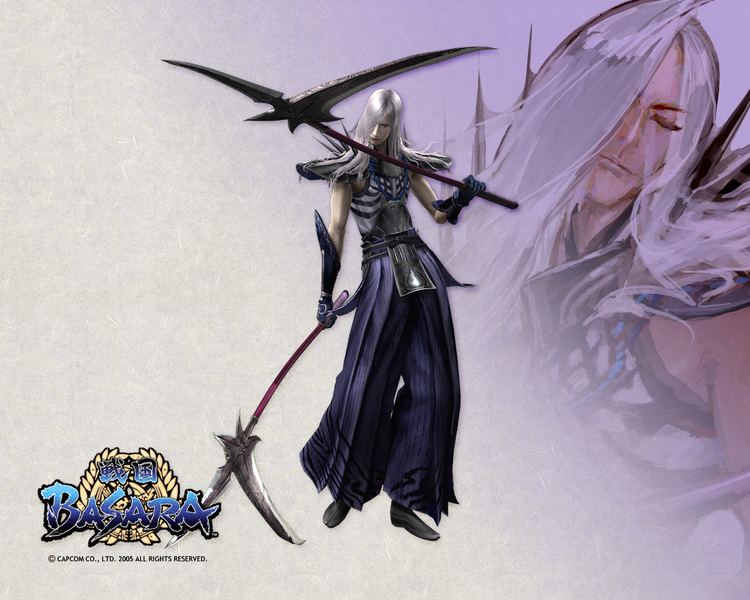Name Akechi Mitsuhide Grandparents Akechi Mitsutsugu | Parents Akechi Mitsutsuna Died July 2, 1582, Yamazaki | |
 | ||
Born March 10, 1528 ( 1528-03-10 ) Children Hosokawa Gracia, Akechi Mitsuyoshi Similar People | ||
Other names Yagyu Jubei Mitsuyoshi | ||
Akechi mitsuhide hikaru midorikawa gyoko no hikari
Akechi Mitsuhide (明智 光秀, March 10, 1528 – July 2, 1582), first called Jūbei from his clan and later Koretō Hyūga no Kami (惟任日向守) from his title, was a samurai and general who lived during the Sengoku period of Feudal Japan. His full name was thus Akechi Jūbei Minamoto-no-Mitsuhide (明智 十兵衛 源の光秀).
Contents
- Akechi mitsuhide hikaru midorikawa gyoko no hikari
- Akechi mitsuhide is the most disturbing person ever
- Early life and rise
- Incident at Honno ji
- The Battle of Yamazaki
- Aftermath
- Reasons for betrayal
- Family
- Ancestors
- In popular culture
- References

Mitsuhide was a general under daimyō Oda Nobunaga, although he became famous for his rebellion against Nobunaga in 1582, which led to Nobunaga's death at Honnō-ji.

Akechi mitsuhide is the most disturbing person ever
Early life and rise

He was born in Tara castle, Mino Province-now Gifu Prefecture Mitsuhide is a descendant of the Toki-Akechi family of the shugo Toki clan. Mitsuhide is rumored to be a childhood friend or cousin of Nōhime. It is believed that he was raised to be a general among 10,000 by Saitō Dōsan and the Toki clan during their governorship of the Mino province. When Dōsan's son, Saitō Yoshitatsu, rebelled against his father in 1556, Mitsuhide sided with Dōsan.

Mitsuhide began serving the "wandering shogun" Ashikaga Yoshiaki as one of his guardians under Hosokawa Yusai. Shogun Ashikaga ordered Asakura Yoshikage to be his official protector, an offer which Yoshikage declined. Yoshiaki appealed to Mitsuhide, who suggested Oda Nobunaga instead.

In 1564, Nobunaga sent his sister Oichi to be the bride of Azai Nagamasa. This aided him in his 1566 conquest for Mino province, and opened the path to Kyoto. The shogun Yoshiaki and Mitsuhide arrived at Kyoto, the capital of Japan, converting Hongoku-ji temple to a temporary palace in November 1568. Nobunaga returned from Kyoto on January 4, 1569. The Miyoshi clan and Saito Tatsuoki defeated the daimyo of Mino, and attacked Ashikaga Yoshiaki at Hongoku-ji, where Mitsuhide successfully defended the Shogun. Nobunaga asked Mitsuhide to join his troops and Mitsuhide decided to serve both the Shogun and Nobunaga.

Mitsuhide received Sakamoto (in Ōmi, 100,000 koku) in 1571 after the successful attack at the Enryaku-ji temple. Although Nobunaga rarely put too much trust in his retainers, he particularly trusted Shibata Katsuie, Hashiba Hideyoshi, and Akechi Mitsuhide, who was the first subordinate to receive a castle from Nobunaga. After Mitsuhide received Sakamoto, he moved to pacify the Tamba region by defeating several clans such as the Hatano and the Isshiki of Tango. Mitsuhide also received Kameyama castle and Tanba Province (550,000 koku).
He participated in the 1577 Battle of Tedorigawa.
Incident at Honno-ji
In 1579, Nobunaga captured Yakami Castle from Hatano Hideharu by promising Hideharu peace terms; however, Nobunaga betrayed the peace agreement and had Hideharu executed. This reputedly displeased the Hatano family, and a short while later several of Hideharu's retainers murdered Akechi Mitsuhide's mother (or aunt). The failing relationship between Nobunaga and Mitsuhide was further fueled through several public insults which Nobunaga directed at Mitsuhide.
In 1582, Mitsuhide was ordered to march west and assist Hashiba Hideyoshi who was currently fighting the Mōri clan. Ignoring his orders, Mitsuhide assembled an army of 13,000 soldiers and moved against Nobunaga's position at Honnō-ji. On June 21, Mitsuhide was quoted as saying, "The enemy is at Honnō-ji!". His army surrounded the temple and eventually set it on fire. Oda Nobunaga was killed either during the fighting, or by his own hand. Nobunaga's son, Oda Nobutada, fled the scene, but was surrounded at Nijō and killed. Despite not killing Nobunaga personally, Mitsuhide claimed responsibility for his death.
The Battle of Yamazaki
Mitsuhide's betrayal of the Oda shocked the capital, and he was forced to move quickly to secure his position. Mitsuhide, claiming lineage from the Toki and thus the Minamoto clan, declared himself Shogun, and looted Azuchi castle to reward his men and maintain their loyalty.
Mitsuhide attempted to make gestures of friendship to a panicked Imperial Court; he also made many attempts to win over the other clans, but to no avail. Hosokawa Fujitaka, to whom he was related through marriage, quickly cut ties with him; Tsutsui Junkei, who previously had a rocky relationship with the Oda, sided against him.
Mitsuhide had counted on Toyotomi Hideyoshi being detained fighting with the Mori, and unable to respond to Mitsuhide's coup d'état. However, having learned of the assassination of his lord, Hideyoshi quickly signed a peace treaty with the Mori, and alongside Tokugawa Ieyasu rushed to be the first to avenge Nobunaga and take his place.
Hideyoshi force-marched his army to Settsu in four days, and caught Mitsuhide off guard. Mitsuhide had been unable to garner support for his cause, and his army had dwindled down to 10,000 men. Hideyoshi, however, had won over former Oda retainers, including Niwa Nagahide and Takayama Ukon, and had a strength of 20,000 men. The two forces met at the Battle of Yamazaki.
Mitsuhide took up a position south of Shōryūji Castle, securing his right flank by the Yodo river, and his left at the foot of the 270-metre Tennozan. Hideyoshi immediately seized the advantage by securing the heights of Tennōzan; his vanguard then maneuvered to face the Akechi forces along the Enmyōji river. Mitsuhide's forces made a failed attempt to force Hideyoshi from Tennōzan. Hideyoshi's general, Ikeda Nobuteru moved to reinforce Hideyoshi's right flank, which soon crossed Enmyōji-gawa and turned the Akechi flank. Simultaneously, Hideyoshi's forces marched against the Akechi front; this started a rout, only two hours after the battle had begun.
Aftermath
Mitsuhide's reign as shogun lasted only 13 days. Upon leaving Yamazaki, Mitsuhide died en route to Sakamoto.
He is rumored to have been killed by a peasant warrior by the name of Nakamura Choubei with a bamboo spear; however, there were also rumors that he was not killed, but rather started a new life as a priest called Tenkai.
The short reign of Mitsuhide is listed as the inspiration for the yojijukugo set phrase mikkatenka (三日天下, short-lived reign).
Reasons for betrayal
No one knows the specific reason that Mitsuhide betrayed Nobunaga, though there are several theories:
Family
Ancestors
The Akechi family was able to trace their heritage to the Toki clan and from there to the Minamoto clan. It is noted that Minamoto no Yoritomo brought the destruction of the Taira clan the same way Mitsuhide brought an end to Nobunaga, who traces his ancestry to the Taira clan. The sword of Mitsuhide is of the Tensho style; the Tensho Koshirae was first designed to be a replica of Akechi Mitsuhide's own sword.
In popular culture
See People of the Sengoku period in popular culture.
